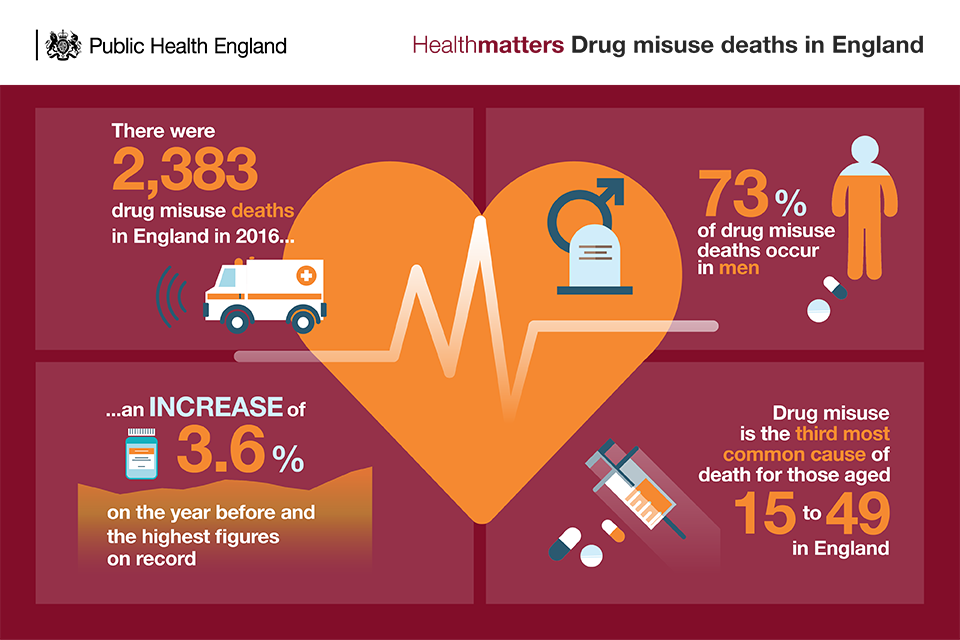According to the National Survey on Substance Abuse and Health (NSDUH), 45 percent of people with dependency have a co-occurring psychological health condition. Behavioral models utilize principles of functional analysis of drinking habits. Habits designs exist for both working with the substance abuser (neighborhood reinforcement approach) and their family (neighborhood reinforcement approach and family training). Even today, the Internet offers rise to a variety of unusual and aversive techniques and "remedies" for addiction that can not just make people ill, but are likewise mainly ineffective. During the mid to late 1800s, cocaine, chloral hydrate, chloroform, and marijuana became extensively recommended and utilized, and dependencies to these drugs, in addition to to opioids, grew.
Things began to alter, however, as the United States ended up being more of a global power, and drug abuse internally ended up being less appropriate to the outside world. Physicians were likewise starting to understand the potential dangers of substance abuse and addiction, and modification in the population of people addicted to drugs may have required the hand of the government to enact legislation controlling the prescription, sale, and abuse of narcotics.
Society perpetuated the concept that drugs were the cause of lots of criminal acts, consisting of rape, dedicated by this market and pointed out drug abuse as one of the main reasons. In issue for the security of women and children, and the growing domestic drug and narcotic drug problem, political leaders might have taken notice.
Physicians were no longer enabled to recommend opiates for upkeep purposes, and individuals addicted to these drugs might have been left to withdraw painfully on their own or devote criminal acts to try and get these drugs illegally. Medical professionals were also jailed for prescribing opioids if they were not deemed clinically essential, and doctors were no longer able to treat those addicted to opioids with maintenance dosages out of their workplaces directly.
Throughout this time period, community centers that had been the go-to for people battling opioid or narcotic addiction were closed down. "Ambulatory" opioid dependency treatment, in addition to the new specialized of addiction science, was all however eliminated for numerous years, and numerous struggling with dependency ended up in jail rather of getting the help they needed.
In 1929, in the face of extreme federal jail overcrowding and no genuine answers for addiction treatment, the Porter Act was passed that mandated the formation of two "narcotics farms" to be run by the U.S. Public Health Service. In 1935, one such prison/hospital supplying addiction treatment for prisoners or those willingly looking for services opened in Lexington, Kentucky, while the second opened in Forth Worth, Texas, in 1938. how much is the average addiction treatment.
Some Known Factual Statements About What Is Evidence Based Treatment For Addiction
They used a three-pronged method, including withdrawal, convalescence, and then rehab, all perpetuated by a medical and mental health group of experts.Treatment for addiction vacated the community-based and "goodwill" type facilities to a more scientific setting. As an Take a look at the site here outcome, addiction treatment services started to move to a more medical method.

Narcotics Anonymous might have originated in one of the federal "narcotics farms" and might have started as "Addicts Anonymous" that was sluggish to capture on however, over time gained popularity using AA designs and techniques of support. By 1950, the Minnesota Design, which is a method of treating chemical dependency by both professional Addiction Treatment Delray personnel and encouraging people in healing themselves, had been introduced.
The possession and sale of narcotics were further criminalized in 1952 and 1956 with the passage of the Boggs Act and the Narcotic Control Act respectively, which included high penalties for drug belongings and the sale of narcotics. Young people addicted to opioids, and especially heroin, became progressively more widespread, especially in New York City, in the 1950s, and sustained the requirement for juvenile and teen drug treatment programs along with the idea that dependency was indeed an illness.
Long-term domestic choices were thought about, as regression rates were so high, and restorative communities (TCs) were born the first Homepage of which may have been the Synanon in California in 1958. TCs were, and still are today, property communities where individuals fighting with drug dependency stayed for an extended period of time with groups of people with like situations.
When they first appeared, TCs did not permit any type of mind-altering medications, much in the vein of AA methodology; nevertheless, today, TCs may permit for the usage of upkeep medications when necessary. In the 1960s, methadone was presented as an opioid dependency maintenance treatment, as it was a long-acting opioid that might be alternatived to shorter-acting ones, such as heroin.
In 1964, the Narcotics Dependency Rehabilitation Act (NARA) of 1966 supplied regional and state governments with federal help for drug treatment programs planned for those addicted to narcotics. These programs were meant to provide inpatient services; however, due to overwhelming requirement, a lot of clients were likely served with more cost-efficient outpatient services that consisted of weekly drug tests, counseling three times a week, dental corrective services, psych consults, vocational training, and methadone maintenance.
An Unbiased View of How To Find Free Meth Addiction Treatment Centers In San Diego
In the 1970s, further legislation controlled the dispensing of the opioid villain and brought it under federal control with the introduction of the Special Action Workplace for Drug Abuse Prevention (SAODAP) by President Nixon during his War on Drugs. The Comprehensive Alcoholic Abuse and Alcohol Prevention, Treatment, and Rehab Act of 1970 commenced to improve treatment for alcohol addiction by means of medical means by acknowledging it as a possible illness instead of a moral stopping working of character, thus opening increased research into the topic - what is drug addiction treatment.
By the 1980s, drug dependency treatment and alcoholism treatment were finally viewed as comparable, and treatment efforts were combined. In 1985, specialized treatment options begin frequently appearing, accommodating demographics such as the elderly, gay individuals, ladies, teenagers, and those experiencing co-occurring mental health conditions. In 1987, despite President Regan's restored War on Drugs project that looked for to punish drug abusers, the American Medical Association (AMA) declared substance abuse as a legitimate illness and demanded that it be dealt with no differently than other medical conditions.

Hospital-based inpatient treatment centers were required to close their doors in between 1989 and 1994 after insurance ceased paying advantages. Dependency services were rolled into behavioral health services along with mental health and psychiatric conditions, unlocking to a more outpatient or extensive outpatient approach as opposed to mostly residential treatment.